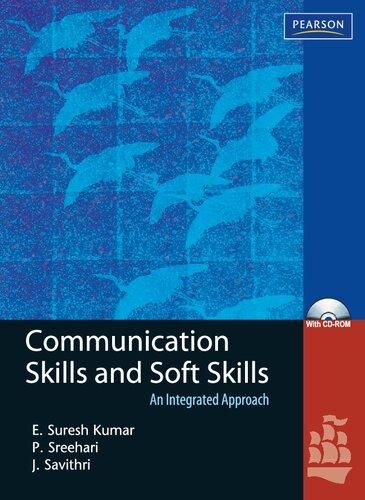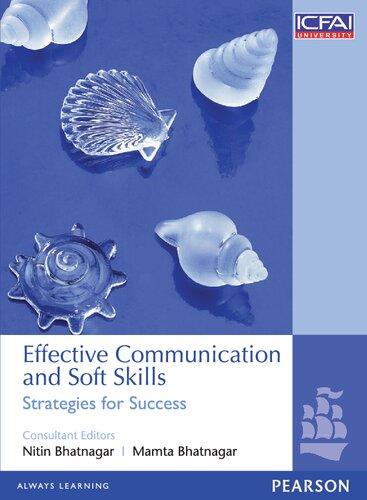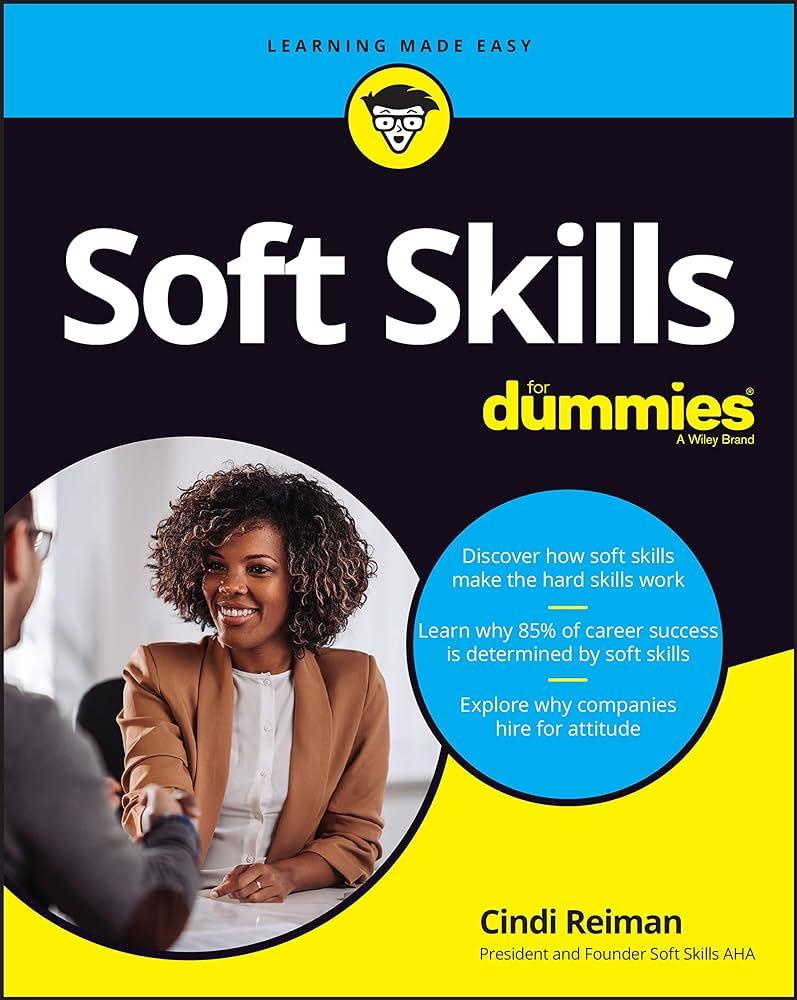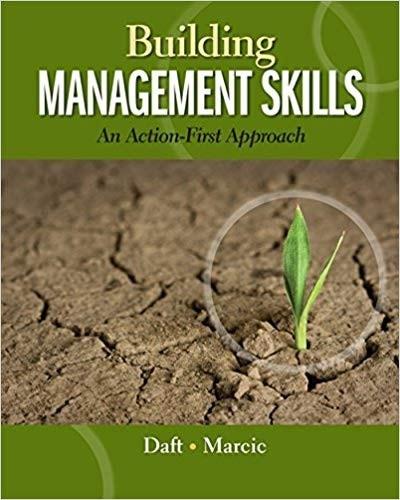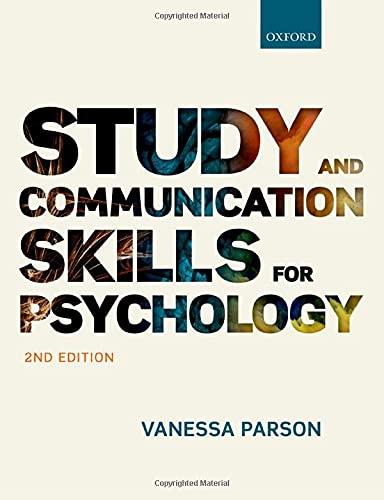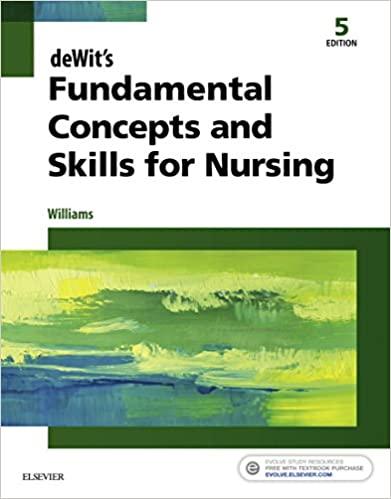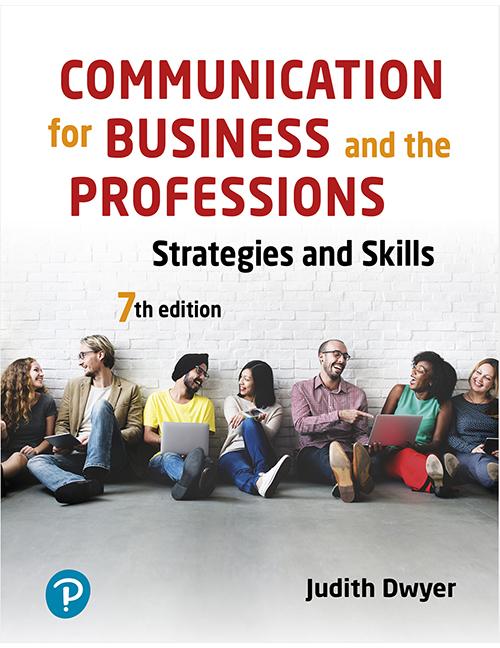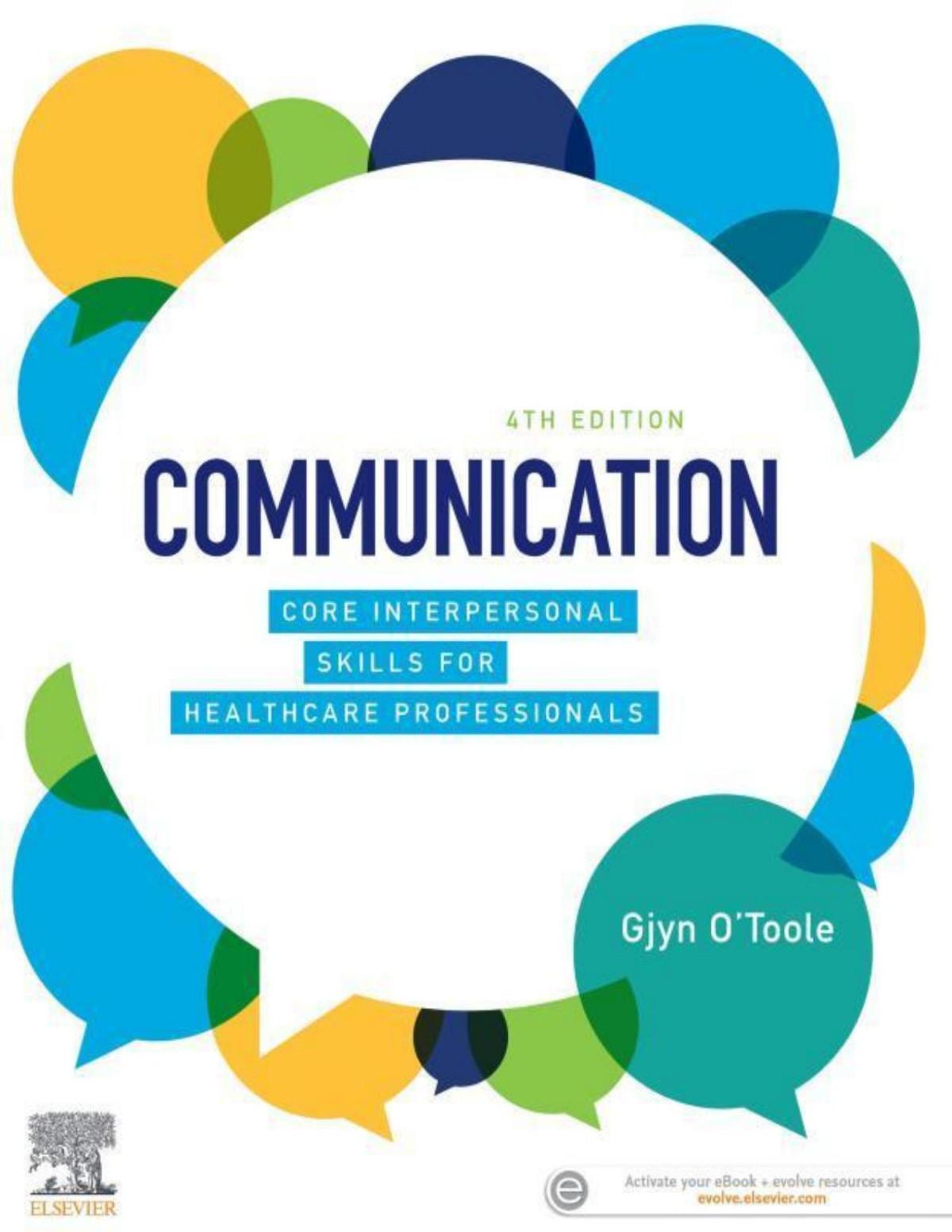READING
Interpersonal Communication and Relationship Development
I. Read the following information on interpersonal communication and relationship development and do the tasks that follow: Researchers have studied relationships to understand how they develop. Mark Knapp’s Relational Stages Model and Stephen Duck’s Relationship Filtering Model are used to describe many types of relationships. Read about these models and then answer the questions to test your knowledge.
Knapp’s Relationship Escalation Model
Initiation This stage is very short, sometimes as short as 10–15 seconds. In this stage, interactants are concerned with making favorable impressions on each other. They may use standard greetings or observe each other’s appearance or mannerisms.
Experimenting In the next stage, individuals ask questions of each other in order to gain information about them and decide if they wish to continue the relationship. ‘Many relationships progress no further than this point’.
Intensifying Self-disclosure becomes more common in the intensifying stage. The relationship becomes less formal, the interactants begin to see each other as individuals, and statements are made about the level of commitment each has to the relationship.
Integrating The individuals become a pair in the integrating stage. They begin to do things together and, importantly, others come to see them as a pair. A shared relational identity starts to form in this stage.
Bonding During the bonding stage, a formal, sometimes legal, announcement of the relationship is made. Examples include a marriage, ‘best friend’ ritual, or business partnership agreement. Few relationships reach this level.
Duck’s Relationship Filtering Model
Sociological/ Incidental Cues
Preinteraction Cues
Duck’s model is a set of filters through which we make choices about the level of relationship we wish to pursue with others. The first filter, sociological/incidental cues, describes the constraints placed on our meeting people due to where we live or work. In other words, given our sociological location, there are some people we see a lot of and others we never meet.
Information we gain about people before we even interact with them leads us to exclude or include individuals with whom we wish to have a relationship. For instance, the appearance of some individuals will cause you to avoid or approach them.
Interaction Cues As we begin to interact with others, we make judgments about whether to include or exclude them from possible relationships.
Cognitive Cues At the deepest level, we make judgments about people based on their personality and the degree to which we think it will match ours. As others reach this level, we consider them ‘best friends.’
Now, do the following based on the above information.
1. Match the interaction stages under ‘A’ with the interaction activities under ‘B’, based on Knapp’s Relationship Escalation Model.
AB
1. initiation (a) asking questions to gain information
2. experimenting(b) formal announcement of the relationship is made
3. intensifying (c) get into a shared relational identity
4. integrating (d) greeting and observing
5. bonding (e) revealing themselves fully
2. Match the relationship filters under ‘A’ with the factors that influence the interaction under ‘B’, based on Duck’s Relationship Filtering Model.
AB
1. sociological/incidental cues (a) constraints like where we live and work come into play
2. preinteraction cues(b) your knowledge about your interactants you gain before you start interacting comes into play
3. interaction cues(c) judgments that you make as you interact come into play
4. cognitive cues(d) judgments that you make about the personality of your interactant comes into play
Johari Window
II. Read the following information about the Johari Window and do the tasks that follow:
The Johari Window is a good model for understanding interpersonal communication. It shows you how much information you know about yourself and how much others know about you. The window contains four areas/panes, as shown below:
Known to self
Unknown to self
Known to others OPEN known to self and others BLIND blind to self, seen by others
Unknown to others HIDDEN open to self, hidden from others UNKNOWN unknown to self and others
1. The ‘open’ quadrant represents things that both you know about yourself, and that others know about yourself. This includes information such as your physical appearance and your qualifications, etc.
2. The ‘blind’ quadrant represents things that others know about yourself, but that you are unaware of. You might think you are a great, but others think you exhibit poor leadership skills.
3. The ‘hidden’ quadrant represents things that you know about yourself, which others do not know. This includes information you wish to keep private, such as dreams or ambitions.
4. The ‘unknown’ quadrant represents things that neither you know about myself, nor others know about you. You may have hidden talents, for example, that you have not explored. The process of enlarging the open quadrant is called self-disclosure. self-disclosure might help you to bond with people easily. But the flip side to it is that it can also have a damaging effect. As you interact with people take care of your grammar, choice of words, organisation of thoughts, and use of logic in arguments because others tend to form either a high or low opinion about you using these aspects.
Try These Out:
1. Which quadrant of the Johari window reveals information about the colour of your eyes?
2. In a healthy relationship, both individuals disclose the same amount of information.
3. Which quadrant of the Johari window reveals information about your hidden talents?
4. Which quadrant of the Johari window reveals information about your secret dreams and ambitions?
Pair Work
Work with someone who knows you reasonably well and describe each other with reference to the Johari window.
Persuasion Techniques
II. Read the article below on persuasion techniques and answer the questions that follow:
Persuasion Techniques: Social Needs and Chosen Words
Michael Lee
Some people go about life, blissfully unaware of the subtle influences that other people may be trying to show them. But the art of persuasion is being used everywhere. While some people may be using persuasion techniques in order to sell you a product, others may be trying to get a date or trying to get you to join their religion.
Common persuasion techniques include creating needs in others, which can be basic or social needs. Others can include the use of certain powerfully persuasive words.
Perhaps one of the most important persuasion techniques is creating a social need. An example of a social need is the need to be popular and have everyone like you. Many would say that this is not an important factor in life; however, it drives many people to do certain behaviours.
In the area of television, a commercial might use the example of a need to be popular by convincing you that you need a product in order to fit in. Let’s say you are a teenager suffering from acne. A commercial comes on and shows a picture of someone all alone with acne. Then they skip to the same person with a clear face surrounded by friends. The teenager may then wish to purchase the product so that they can get rid of their acne and acquire more friends.
The art of using powerful words is also one of the top persuasion techniques. You will find these examples on television as well or maybe on labels and in print advertisements. Advertisers will use words such as new, natural and free. These three words have been known to get the consumer’s attention and that is exactly what the advertisers want! Persuasive words can also be used by pretty much anyone who is trying to elicit certain behaviour out of another individual or group. Some more of the most influential words include: discover, proven, guaranteed, save, good and easy. Gaining an awareness of the many persuasion techniques going on around you can prove to be one of your biggest assets. It can help you when dealing with strangers, your personal life and your work life. Learning the art of persuasion can be the difference between meeting your life goals and falling short. It can also help you to gain an understanding of when other people and companies are using persuasion on you. You will then be able to keep a clear head and only allow yourself to be persuaded in situations where you would like to be.
Now, decide if the following statements are true or false based on the above article:
1. A persuader does not necessarily use powerful words. (True/False)
2. Creating certain need is an important aspect of persuasion. (True/False)
3. Persuasion is used for a variety of purposes. (True/False)
4. Persuasion techniques are used only when talking to strangers. (True/False)
5. The art of persuasion cannot be learnt. (True/False)
Asking for Information Politely
Pair Work
III. Collect information about your partner for the following topics using questions that begin with ‘Can…’, ‘Could…’, and ‘Would…’, etc. Share the information you have gathered with the class.
Example:
Could I know what your favourite book is?
1. Favourite actor
2. Favourite actress
3. Favourite author
4. Favourite book
5. Favourite colour
6. Favourite day of the week
7. Favourite holiday spot
8. Favourite movie
9. Role model
10. Goals in life
My partner’s profile
The Person I Admire the Most
IV. Give a speech about the person you admire the most, focussing specifically on the following:
how he or she uses the language
how effective is he or she as a communicator
how effective is he or she as a listener
how powerful is he or she nonverbally
how he or she relates himself or herself with others
Use the space below to draft your speech.
LISTENING
Listening Exercise 1
Listen to the dialogue on interpersonal communication between an interpersonal effectiveness coach and her student. Now, answer these based on the above conversation:
1. What is interpersonal communication?
2. What are the functions of interpersonal communication?
3. What needs to be done to achieve interpersonal effectiveness?
4. What are some of the conversation techniques?
Listening Exercise 2
Listen to this presentation on effective listening skills. Here, a communication skills trainer shares some valuable information on effective listening with his students. Now, answer these based on the presentation on effective listening you’ve just listened to:
1. How important is listening as a skill?
2. With what efficiency do people tend to listen?
3. What is the difference between listening and hearing?
4. How important are nonverbal cues in listening?
5. Why should a listener empathize with the speaker?
WRITING
Writing a Statement of Purpose
The Statement of Purpose (SOP) is an essay you write about yourself so as to convince the admissions committee of your prospective college or university why you are the right candidate to pursue your studies there.
In your SOP, you will have to substantiate your reasons for pursuing the course you are applying for. As the admissions committee gets to know about what type of person you are, what you have achieved so far in your field of study it is very important that you spend considerable amount of in drafting a winning statement of purpose.
The substance or content of your SOP
use the internet or the university prospectus to study about the university you are applying to and the course you want to study
write down all your past accomplishments—academic, extracurricular, social contributions, sports
mention in your SOP as to why you chose the university you are applying to
the area of study in which you wish to specialize
your future use of your graduate study
your special preparation and fitness for study in the field
The form or style of your SOP
write your SOP in the form of an essay
understand that your SOP is an example of careful persuasive writing
make sure that your SOP is objective yet self-revelatory
write directly and in a straightforward manner
make sure that there are no grammar, vocabulary and typographical errors
ensure a good flow
arrive at your final draft only after you have revised your several rough drafts
A Sample Statement of Purpose
(Note: This sample SOP is included just to give you some idea of how an SOP can be written. It is in no way ideal. Please note that you have to write your own SOP keeping several points mentioned above in mind.)
The current global recession and the context of free trade and exchange worldwide have brought about immense opportunities to develop newer tools, instruments and methodologies in the field of financial management. It is this challenging environment to which I intend to contribute by evolving meaningful and optimal solutions to various problems of finance. Thus, my goal is a career in International Finance wherein I could advance analytical approaches to financial management.
To achieve my career goals, I need to learn much more about current developments and techniques in finance, financial markets and financial applications and acquire hands-on experience of financial analysis. A Master’s Degree will provide me with theoretical understanding, an in depth idea of practical approaches in aiding managerial decision-making and research skills to enable me to develop an expertise in the core areas of financial strategies and global corporate financial operations. I opted for Finance as a specialization in my MBA because financial aspects are crucial to successful running of any organization. As blood is to a human being, finance is to an organization. Strong quantitative skills, familiarity with computer applications and experience gained while working on my recent MBA project have helped me to develop sharp analytical abilities. I would like to get into the corporate sector and contribute a great deal in financial management. But before that I thought I must gain clearer understanding of key concepts in finance which is the reason why have been working as faculty in a PG college where I teach finance.
I wish to pursue my MS (finance) program in the US, the land of opportunities, as I believe will expose me to get globally acclaimed and globally recognized practices here. And the post study benefits like opportunities to work in challenging atmosphere of organizations of repute in various countries including India are really promising for the ones who have studied in universities of repute like yours in the US. I have learned that the University of Princeton has outstanding faculty and research facilities, emphasis on a collaborative learning environment, flexibility in curriculum, global perspective to various key issues. I hope to become a part of this dynamic culture which will give me a leading edge to work effectively in diverse teams and situations.
In conclusion, I would like to add that the essence of University education lies in the synergetic relationship between the student and his department. I feel that graduate study at your University will be the most logical extension of my academic pursuits and a major step towards achieving my objectives. I would feel privileged if I’m accorded the opportunity to pursue my graduate studies with financial assistance at your institution. I promise that I would be able to justify your faith in me.
Try This Out:
Study some sample SOPs online and write your own SOP.
PRONUNCIATION
Phonemic Symbols/Sounds
I. Learn the following phonemic symbols to help you find out the correct pronunciation of English words using a good dictionary.
Listen and Repeat
Vowel Sounds
Symbol/Sound Keyword
/ә / about
/a:/ ask
/I/ it
/i:/ eat
/Ω / pull
/u:/ pool
/e/ pen
/æ/ pat
/ / cut
/e:/ girl
/a/ cot
/eɪ/
/aɪ/
/ɔɪ/
Consonant Sounds
/c:/ caught say ice boy dear
/ɪə/
/ee/ fair
/Ω e/ poor
/aΩ / out
/eΩ / go
/p/ pack
/b/ back
/t/ ten
/d/ den
/t∫/ cheap
/dȜ/ jeep
/k/ kit
/g/ get
/f/ fan
/v/ van
/θ/ thin
/ð/ then
/m/ meet
/n/ neat
/ђ/ bank
/h/ hat
/s/ seat
/z/ zoo
/∫/ ship
/Ȝ/ pleasure
/r/ read
/l/ lead
/j/ yet
/w/ wet
Pronunciation of ‘–ed’ and ‘–es’
II. Study the pronunciation of words that end in ‘–ed’ and ‘–es’.
Listen to the words below: booked bagged batted books bags buses
You might have noticed that in the word ‘booked’ the letters ‘ed’ are pronounced as /t/, in the word ‘bagged’ the letters ‘ed’ are pronounced as /d/ and in the word ‘batted’ the letters ‘ed’ are pronounced as / d/. And in the word ‘books’ the letter ‘s’ is pronounced as /s/, in the word ‘bags’ the letter ‘s’ is pronounced as /z/ and in the word ‘buses’ the letters ‘es’ are pronounced as / z/.
The variation in pronunciation of ‘–ed’ and ‘–es’ is due to the phonetic environment (whether they come after voiced or voiceless sounds) in which they occur. In English the voiceless sounds are /p/, /t/, /k/, /f/, /θ/, /s/, /∫/, /h/ and /t∫/ and the voiced sounds are the rest of the consonant sounds and all the vowel sounds. (Refer to the pronunciation key in appendix 1 to learn these symbols.)
Here are the three rules for pronunciation of ‘ed’: ‘ed’ is pronounced as 1. /t/ after voiceless sounds excepting /t/.
Examples: clapped /klæpt/ missed /m st/
crushed /kr ∫t/ reached /ri:t∫t/
2. /d/ after voiced sounds excepting /d/.
Examples: dragged /drægd/ fried /fra d/ cleaned /kli:nd/ summed /s md/ cured /kjued/ loved /l vd/ curbed /ke:bd
3. /Id/ after /t/ and /d/.
Examples: painted /pe nt d/ wanted /wc:ntd sounded /saΩnd d/ grounded /graΩnd d/
Pronunciation of ‘–s/es’
Here are the three rules for pronunciation of ‘s/es’: ‘s/es’ is pronounced as 1. /s/ after voiceless sounds excepting /s/, /∫/ and /t∫/
Examples:
caps /kæps/ writes /ra ts/ laughs /la:fs/ picks /p ks/ hits /h ts/ pats /pæts/ 2. /z/ after voiced sounds excepting /z/, /Ȝ/ and /dȜ/
Examples: rags /rægz/ toys /tc z/ friends /frendz/ ends /endz/ dreams /dri:mz/ legs /legz/ cleans /kli:nz/ fans /fænz/
3. / z/ after /s/, /∫/, /t∫/, /z/, /Ȝ/ and /dȜ/
Examples: places /ple sz/ crushes /kr ∫ z/ searches /se:t∫ z/
Note that the words ending in –ed that function as adjectives are pronounced as / d/. For instance, when the word ‘blessed’ is used as verb it is pronounced as /blest/ but when it is used as adjective it is pronounced as /bles d/.
III. Listen and repeat the following sentences making sure that you pronounce the bold faced parts of the words correctly.
1. Vandana visited many places.
2. She worked in a reputed organisation.
3. They’ve demolished many buildings
4. They cleaned some lakes and rivers.
5. We watched many movies.
VOCABULARY PLUS
Ways of Speaking
Match the words under ‘A’ with their meanings under ‘B’.
AB
1. announce
(a) to cry out loudly, in fear, pain or excitement
2. argue (b) to give a formal talk to a group of people
3. assert (c) to give unwanted advice
4. babble (d) to interrupt a conversation or discussion
5. bellow (e) to make a continuous low sound
6. blurt out (f) to make a loud, deep sound
7. butt in (g) to make a low rough noise
8. chat (h) to make something clear giving details
9. clarify (i) to make something known
10. croak (j) to say or write something, especially clearly and carefully
11. discuss (k) to say quickly and in a confused way
12. gossip (l) to say something in a quiet angry way
13. grunt (m) to say something suddenly and without thinking
14. hiss (n) to say that something is certainly true
15. hum (o) to speak about something quickly, giving little detail
16. lecture (p) to speak angrily
17. mention (q) to speak in a high-pitched voice
18. murmur (r) to speak in a soft, quiet voice that is difficult to hear clearly
19. narrate (s) to speak tremulously, because you are nervous or upset ɪ ɪ
AB
20. preach (t) to speak unclearly, without separating the words correctly
21. quaver (u) to speak with a rough voice
22. slur (v) to speak with pauses and repeating the same sound or syllable
23. squeak (w) to talk about a subject with someone
24. stammer (x) to talk about other people’s private lives
25. state (y) to talk to someone in a friendly informal way
26. yell (z) to tell a story
GRAMMAR
Modal Verbs
You can use words like ‘can’, ‘could’, ‘will’, ‘would’, ‘may’, ‘might’, ‘shall’ and ‘should’ to talk about different functions of language such as asking for information, making offers, requests, or suggestions. These words in English are referred to as modal verbs.
Can is used to express ability, seeking/giving permission, polite request, possibility, etc.
1. I can swim really well. (ability)
2. Can I borrow your bike for an hour? (polite request)
3. Can I go out with my friends this evening? (seeking permission)
4. You can leave the office a bit early today. (giving permission)
5. I can practise more on Sundays. (possibility)
6. Parking vehicles here can be risky. (generalization about what is true all the time)
Try This Out:
Use ‘can’ and write a sentence that indicates the following:
1. ability/inability
2. permission
3. polite request
4. possibility
5. generalization about what is true all the time
Could is used to express suggestion, permission, polite request, past ability, etc.
1. Could I say something here? (opinion)
2. Could I use your pen? (seeking permission)
3. Could you please do me a favour? (polite request)
4. He could climb very tall trees in his younger days. (past ability)
5. He could have revealed the secret. (guess)
6. I can’t sing a song. (present ability)
7. You could go out for a walk in the evenings. (suggestion)
8. You could use my phone. (giving permission)
Note: In making requests, could is more polite than can.
Try This Out:
Use ‘could’ and write a sentence that indicates the following:
1. guess
2. past ability/inability
3. permission
4. polite request
5. present ability/inability
May is used to express possibility, uncertainty, wish, seeking/giving permission, etc.
1. I may go to Goa next Monday. (possibility)
2. May you have a bright career! (wish)
3. I may not be complete my project before the deadline. (doubt/uncertainty)
4. May I leave now? (seeking permission)
5. You may go out now. (giving permission)
Try This Out:
Use ‘may’ and write a sentence that indicates the following:
1. doubt
2. giving permission
3. possibility
4. seeking permission
5. wish
Might is used to express possibility, probability, request, etc.
1. It might rain heavily. (possibility)
2. You might try some potato chips. (suggestion)
3. Might I come with you? (request)
4. I might help you here if you like. (offer)
Try This Out:
Use ‘might’ and write a sentence that indicates the following:
1. possibility
2. suggestion
3. request
4. offer
Will is used to express promise, willingness, command, insistence, futurity, intention, prediction, etc.
1. I will not reveal the secret. (promise)
2. I will take care of your belongings. (offer)
3. India will become a superpower. (prediction)
4. This hall will not accommodate 50 people. (capacity)
5. We will go to Osman Sagar on a picnic. (intention)
6. Will you close the window for me, please? (request)
7. You will do exactly as I tell you to do. (obligation)
8. You will not go out to play today. (command)
Try This Out:
Use ‘will’ and write a sentence that indicates the following:
1. capacity
2. command
3. intention
4. obligation
5. offer
6. prediction
7. request
Would is used to express determination, intention, habitual action, willingness, futurity, request, wish, etc.
1. Would you please get that for me? (request)
2. Every morning he would sell newspapers. (past habitual action)
3. I would like to join your party. (express wish)
4. She said she would serve the nation. (intention/desire)
Try This Out:
Use ‘will’ and write a sentence that indicates the following:
1. express wish
2. past habitual action
3. request
4. intention/desire
Shall is used to express intention, command, threat, promise, compulsion, determination, certainty, etc.
1. Shall I get back to you later? (suggestion)
2. We shall form a new party. (intention)
3. You shall not smoke here. (command)
4. Shall we go out and have lunch? (request)
5. We shall fight till the end. (determination)
6. I shall visit you tomorrow. (future)
Try This Out:
Use ‘shall’ and write a sentence that indicates the following:
1. suggestion
2. command 3. intention 4. request 5. determination 6. future
Should is used to express obligation, instruction, duty, opinion, advice, futurity, purpose, suggestions, etc.
1. You should serve your country. (obligation)
2. You should complete your work this evening. (instruction)
3. Everyone should take regular exercise. (advice)
4. Should I accept this offer? (opinion)
5. He should discover the secret anytime. (expectation)
6. Shouldn’t you be in class now? (surprise)
Try This Out:
Use ‘should’ and write a sentence that indicates the following: 1. obligation 2. instruction
advice
opinion 5. expectation 6. surprise
Must is used to express obligation, prohibition, necessity, duty, certainty, probability, etc.
1. I must get up early in the morning. (obligation)
2. This must be the right way to do this. (certainty)
3. We mustn’t play here. (prohibition)
4. Everyone must submit their résumés in two days. (strong recommendation)
Try This Out:
Use ‘must’ and write sentences that indicate the following:
1. obligation
2. certainty
3. prohibition
4. strong recommendation Articles
Correct the following sentences:
1. Out of office he had mild fondness for letters.
2. A cool breeze smote his face, bringing with it pleasant scents and soothing sound of God’s creatures beginning a new day.
3. Miss Pillenger increased to the third speed. As she did so, she had vision of headlines.
4. He stopped suddenly in his stride, partly because his shin had struck chair, partly because a idea had struck his mind.
5. He had run very hard. He had taken practically no exercise for twenty years, and pace had told upon him.
Prepositions
Fill in the blanks with appropriate prepositions: for from in onto to
The process begins early ____________ the morning. Cooked food is picked up ____________ houses and caterers by dabbawallahs and taken ____________ the nearest railway station. There, the different tiffin boxes are sorted out ____________ specific destination stations and loaded ____________ large, rectangular trays accordingly.
SPELLING
Finding out the word with the correct spelling. Look at the sets of words below and circle the word with the correct spelling. Check your answers with the members of your team. Take the help of a good dictionary to figure out the correct spelling, if necessary.
1. recomendation recammendation recommendation recommendetion
2. questionaire questionnaire questionniare quesstionnaire
3. permmission permision permmission permission
4. certainity cartainty certtainty certainty
5. prohibition prahibition prohibission prohibision
6. privilige privelege previlege privilege
7. disapear dissappear disapper disappear
8. disclosare disclosure dissclosure disclosur
9. higemony heggemony hegemany hegemony
10. disuasion dissuasion dissuassion disuassion
